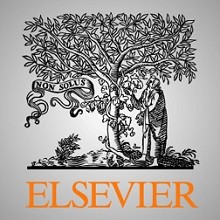
نوریاب های نوع نانولوله کربنی شاتکی برای کاربردهای UV
Abstract
1- Introduction
2- Experimental
3- Results and discussion
4- Conclusions
References
Abstract
Multiple wall carbon nanotubes (MWCNT) present advantages for optoelectronic applications such as the large effective photo-collector surface as well as the possibility to tune their band gap and absorbance through the growth parameters. We demonstrate a hybrid MWCNT/Si3N4/n-Si photodetector based on ordered MWCNTs and evaluate its performance in the UV, visual and near IR spectrum (200–1000 nm). The basic device and some meaningful variations including additional layers are electrically and optically tested and compared. The overall results suggest that all devices had a satisfactory performance in the visual part of the spectrum and that the basic structure had the better performance as a UV detector (EQE 90% @ 275 nm@ 7 V). The aim of this work is to demonstrate that the growth of dense ordered MWCNTs can be successfully combined with other semiconductor clean room processes in order to fabricate photodetectors, provided that the side effects are taken into account and the process flow is selected appropriately.
Introduction
Carbon nanotubes (CNT) along with other carbon allotropes like fullerenes, quantum dots and graphene have attracted great interest because of their unique optoelectronic properties that may lead to novel photosensitive devices. The advantages of these materials are their tunable bandgap, high absorption coefficients and high charge carrier mobility [1],[2]. Several photodevices have appeared, based either on single wall (SWCNT)[3],[4], [5], multiple wall carbon nanotubes (MWCNT)[6],[7] or combinations with graphene[8] using diverse geometries such as planar metal-semiconductor-metal (MSM) or vertical metal-insulator-semiconductor (MIS) structures. The use of CNTs in detector devices for infrared has attracted particular attention[4], [7], [9]. The combination of CNTs with conventional semiconductors and metals to form a device presents technological challenges because of the high temperatures required for the production of CNTs and the catalysts used (e.g. Fe). These conditions may result in structural modifications of the substrate specially when the CNT formation temperature approaches the formation temperatures of other layers or even cause metal migration. One way to circumvent these problems is the separate preparation of CNTs in solution[10], [11]. The drawback of using CNTs from solution is that the effective area of the sensor is limited and this effects the responsivity of the device. On the other hand the use of ordered free-standing MWCNTs for photodevices[12] presents advantages, since they have a tunable absorbance depending on their height while their ordering results in a large effective area sensor. Additionally the bandgap depends on their thickness, thus it is tunable by changing the formation conditions. In this work we fabricated and evaluated a hybrid MWCNT/Si3N4/n-Si photodetector based on ordered dense MWCNTs. The intermediate silicon nitride layer is conductive because of the contamination from the Fe catalyst (Ferrocene, present in MWCNT growth process) and the Au electrode and its conductance is regulated by its thickness. The basic device shows adequate responsivity in the UV and visible part of the spectrum. Along with this device we also fabricated two variations, one with an additional Si3N4 layer on the backside (device NC) and one with an Indium Tin Oxide (ITO) film which overlaps the MWCNT film and the Au electrode (device CI). We investigated the effect of the inclusion of these layers in the basic device (C) by studying the electrical and optical properties.
